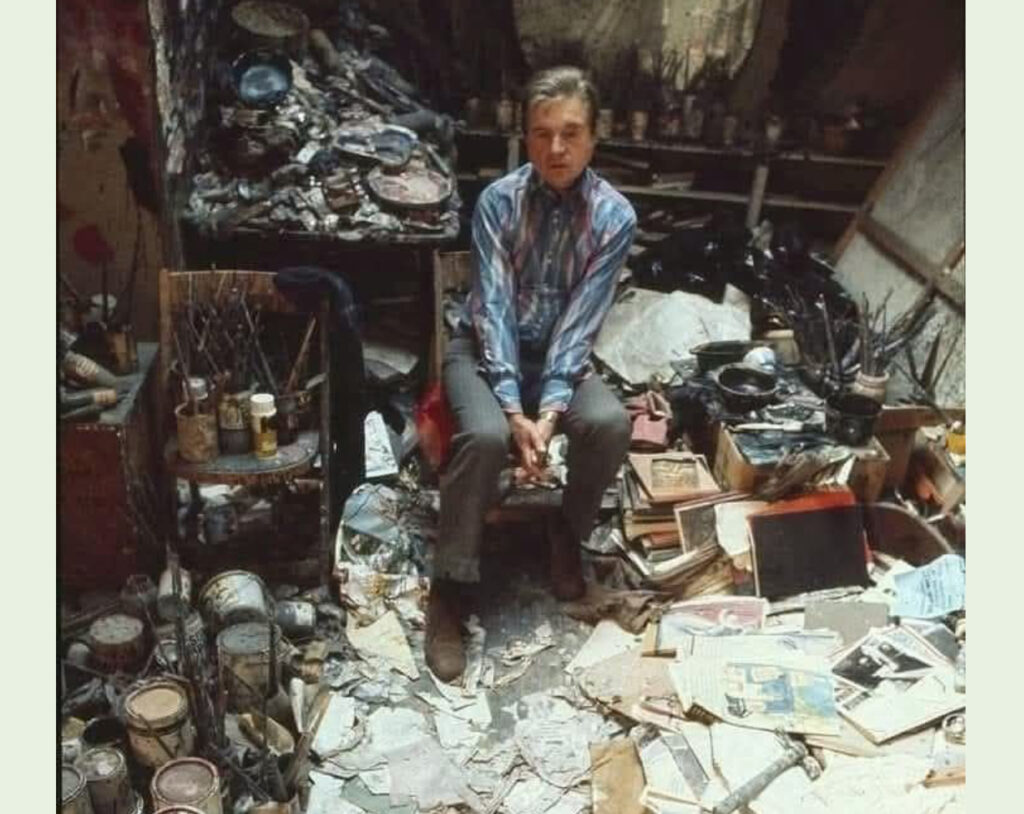Francis Bacon, a prominent British painter known for his raw and emotionally charged artworks, has left an indelible mark on the 20th-century art world. A rare snapshot into his creative process can be gleaned from a photograph capturing the artist in his London studio back in 1974.
Bacon’s Creative Sanctum
The London studio, located at 7 Reece Mews in South Kensington, served as a crucial space for Bacon’s artistic output. The image captured in 1974 provides a unique insight into the intimate and chaotic environment that nurtured his creative genius. Cluttered with paint-splattered surfaces, stacked canvases, and a myriad of eclectic objects, the scene reveals Bacon’s unconventional approach to painting and the depths of his creative psyche.
The Artistic Process Unveiled
Surrounded by visual stimuli, Bacon’s studio was a haven for experimentation and boundary-pushing artistry. A glimpse into his workspace offers an understanding of how he drew inspiration from a diverse range of sources, including photographs, books, and even the disorder of the studio itself. The image captured in 1974 sheds light on his visceral and innovative approach, which redefined the boundaries of figurative painting in the 20th century.
Reflection on the Artist’s Bequest
Since Bacon’s passing in 1992, his London studio has been meticulously preserved and exhibited at the Hugh Lane Gallery in Dublin. The snapshot from 1974 stands as a testament to his artistic legacy, offering future generations an opportunity to appreciate and study the creative workings of this influential artist.
Impression
The photograph of Francis Bacon in his London studio from 1974 offers a rare and intimate look into the mind and process of one of the most influential artists of the 20th century. By preserving and exploring this creative space, we can continue to appreciate the profound impact Bacon had on the art world and the depths of human expression captured within his works.
No comments yet.








